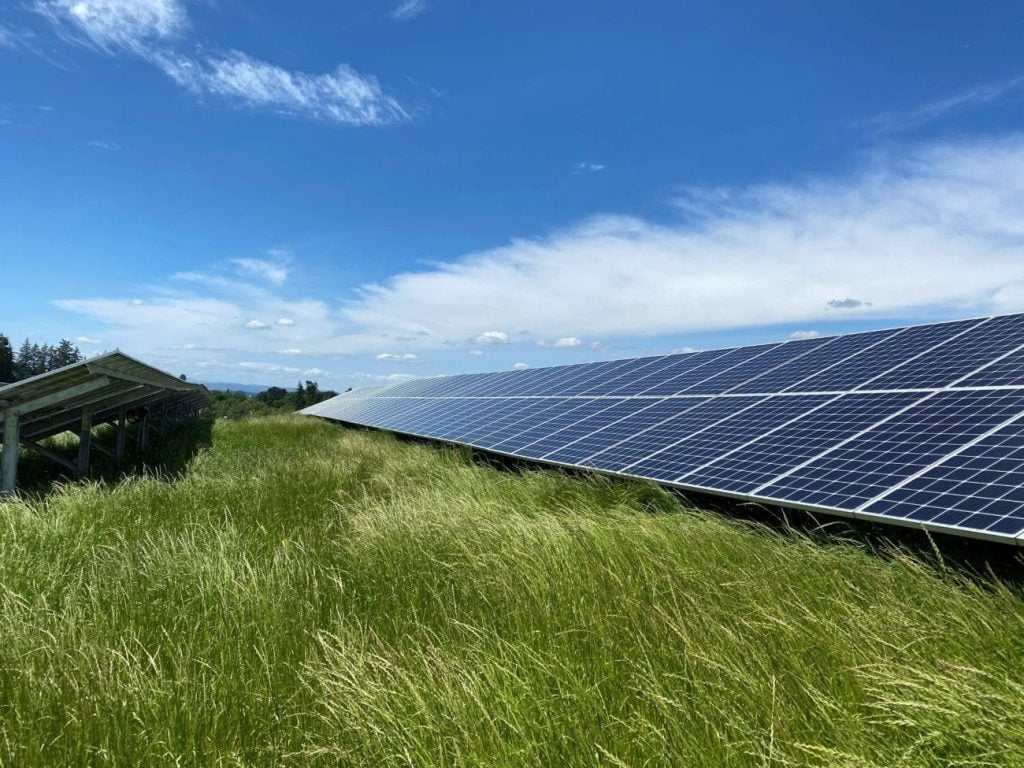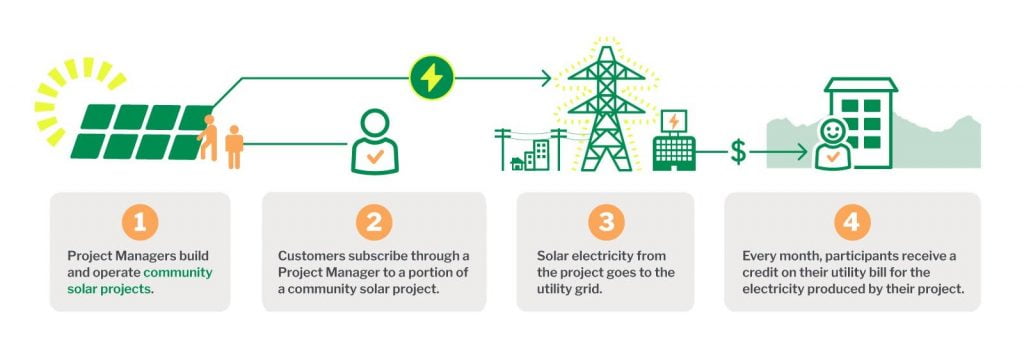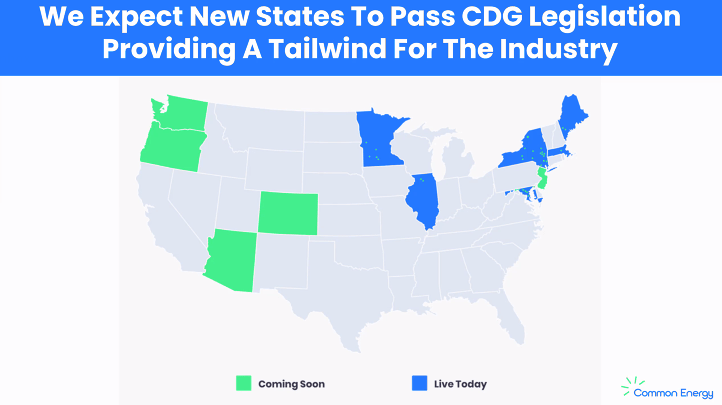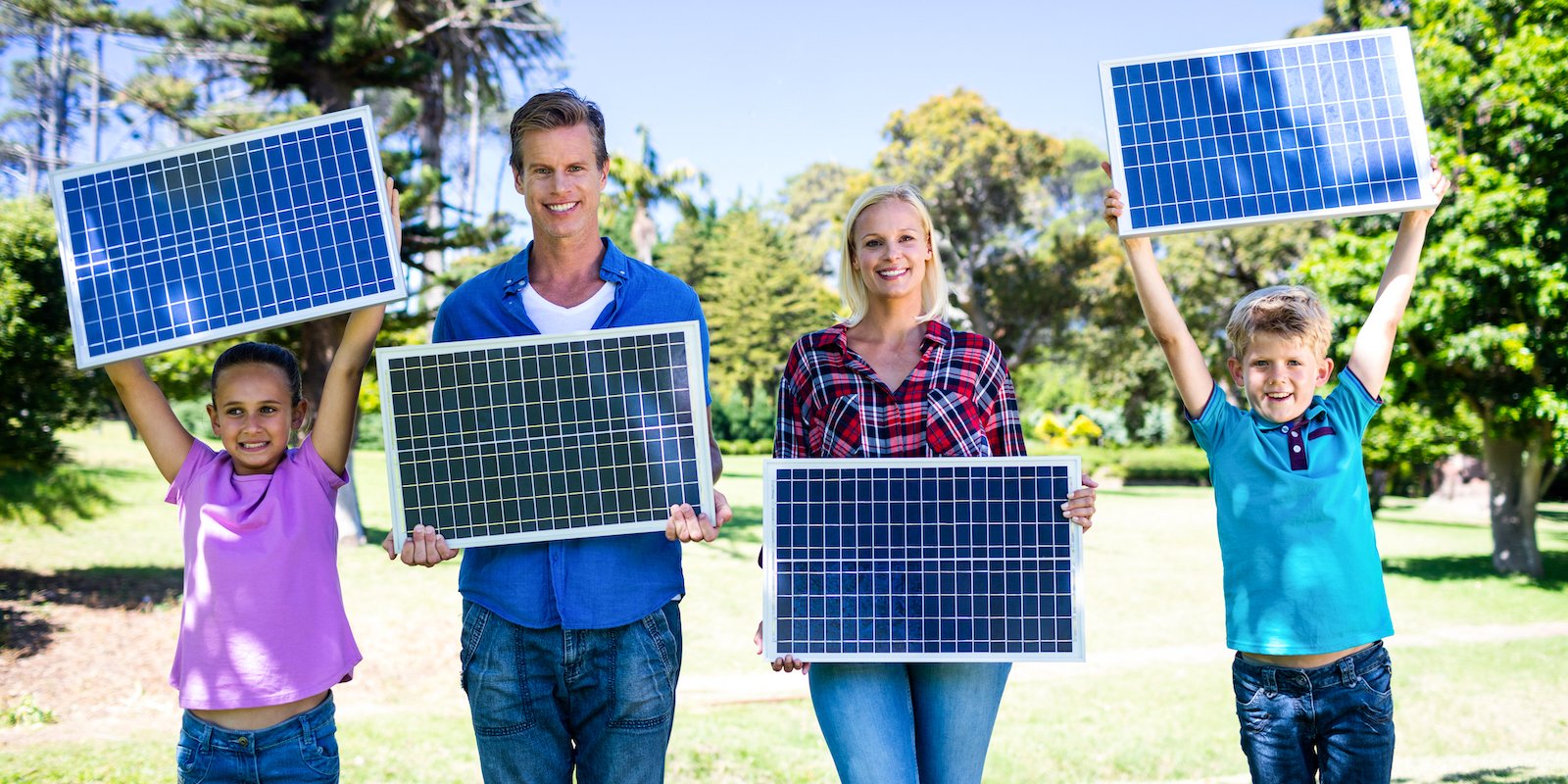When you think about zero energy homes, the mental image generally includes a large array of rooftop solar electric panels. That may be the optimal approach for owner-occupied, single-family homes with an unobstructed view of the southern sky. But rooftop solar won’t work for everyone. Think about renters, apartment dwellers, and those without much in the way of ready capital. If you fall into one of these categories, take heart! There is a path to zero carbon energy for you, too.
Community solar empowers folks who can’t install solar panels on their rooftops to buy solar panels at a solar farm (usually off in a field somewhere relatively nearby), receive credit on their utility bills, and take part in growing solar energy locally. This opens up the benefits of solar energy to many more people.
Take my family as an example. We were lucky enough to install solar panels on our house when we first moved into it in 2012, but after making our home all-electric and buying an electric car, the energy these solar panels produce only meets about 60% of our needs and we’re out of space on our rooftop.

Photo courtesy of Oregon Shines
Signing Up My Family for Community Solar
I decided to look into community solar, interview people involved in the program, and sign up to better understand how community solar works in general.
I enrolled in a community solar program through Oregon Shines. A quick form asked for energy use history from my utility bill, and voila, I was registered to “receive” the energy coming from about seven solar panels in the Red Prairie Solar Project in Yamhill County, Oregon, which will be constructed early next year. Now, of course, the electrons flowing out of those Red Prairie panels won’t really flow into my house like the ones on my roof, but they’ll be providing new solar energy that will go into the grid — and my family will be directly supporting that clean energy.

Image courtesy of Oregon Community Solar Program
How Community Solar Works
The difference between signing up for community solar and installing solar panels on our house was the ease and upfront affordability. We didn’t have to put any money down, and were able to sign up in 15 minutes. When the Red Prairie Solar Farm is built, we’ll start paying for the clean energy it produces on our utility bill at a lower rate than the utility-provided power we were buying before (typically 5 to10% lower). So it ends up being a really easy way to save money and support solar energy at the same time. We signed a 20-year contract for the energy, but if we give 30 days notice of wanting to cancel, we can do so without charge. It seems to me that this ease and affordability will open up solar to so many more people, including low-income families.
The community solar program that I joined follows a subscription model. Another approach follows an ownership model in which each participant actually owns a certain number of solar panels at the solar farm location. Both approaches will generally mean lower electricity cost without price increases in the future — and both approaches add more renewable electricity to the grid. You can learn more about how community solar works from our recent webinar on the topic.

Map courtesy of Common Energy
The Growth of Community Solar
Oregon is one of a handful of states with policies that support community solar. Each state must pass solar community distributed generation (CDG) legislation to enable community solar and empower electric utilities to establish the mechanism that credits customers for off-site energy generated by the solar installation, according to Common Energy. Some states (in green below) have programs in the works or about to launch, while others (in blue) have live, active community solar programs you can sign up for now. Advocates see community solar as an important niche in the solar world and an important way to grow the industry and clean energy. According to the National Renewable Energy Laboratory, NREL, community solar capacity has grown by about 130% year over year since 2010, or more than doubled on average every year.
To find a community solar program in your area, visit the EnergySage Community Solar Marketplace. If your state doesn’t yet support community solar, you can advocate through groups such as Vote Solar or Coalition for Community Solar Access.
Wider Access to Solar
There are definite benefits to owning solar panels on your own roof, powering your home on most days and reaping all the financial benefits from your investment. Since we installed our rooftop solar panels in 2012, we’ve netted around $5,000. Another big advantage for owners of rooftop solar systems is that they make them eligible for tax credits and utility incentives.
So community solar won’t and shouldn’t replace residential solar. But for many who have no, or limited, solar access or cannot afford the upfront costs, it allows much wider access to solar’s benefits. It’s another important tool in our renewable energy toolbelt and this feels like a big win.
Joe Wachunas is a passionate environmentalist who lives in Portland, Oregon. In addition to working for Electrify Now, Joe is a program manager for the nonprofit Forth, which promotes electric transportation. Joe believes that electrifying everything, from transportation to homes, is the quickest path to an equitable, clean energy future. And of course, Joe and his family use their own home to experiment and learn about all-electric solutions, solar power, and electric vehicles.

